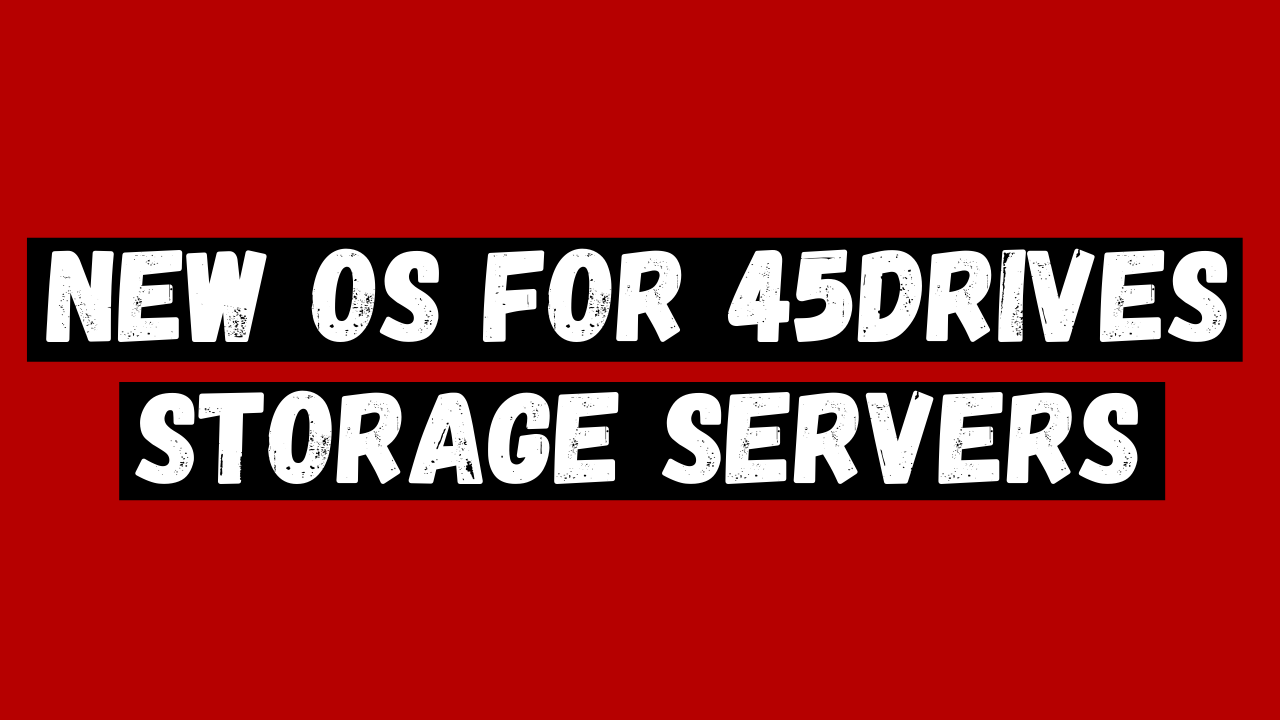WHY WE CHANGED OUR OPERATING SYSTEM

You may have heard that Redhat is ending CentOS as the downstream Red Hat Enterprise Linux (RHEL) rebuild and repositioning it as an upstream build of RHEL. At 45Drives, we had a choice to make – what would be our new primary operating system (OS)?
Why we moved away from CentOS/RedHat
First, let’s talk about why we needed to move away from CentOS/RedHat. CentOS offered a stable and trustworthy rebuild of the paid RHEL product. Because it was a “downstream” rebuild, it guaranteed that the user would always have stable and reliable software packages as it tracked behind the new features and technology of RHEL. This came at the cost of a slightly older but proven technology over newer features.
Now that CentOS is moving to be an “upstream” build of RHEL, the guaranteed stability offered by classic CentOS is no more. There is now the benefit of newer technology and features, but stability guarantees far out weigh newer flashier tech as an enterprise operating system.
What’s our plan moving forward?
Moving forward, we will be offering our solutions on either an RHEL or Debian derivative. As we feel these two families of Linux represent the majority of the Linux server user base.
Right now, the immediate choice and the future Debian derivative is Ubuntu 20.04 LTS.
The RHEL derivative offered is currently CentOS7; while it is at its end of life, it will be receiving maintenance updates until 2024. This is the short-term solution. The long-term solution is to ship with Rocky Linux, the spiritual successor of CentOS Linux.
Rocky Linux will be a downstream rebuild of RHEL8 and will essentially take the current CentOS8 releases place. The team at Rocky Linux has taken on the responsibility of being an enterprise operating system and plans to be a leader in the enterprise server world for a long time coming.
Other RHEL clones are popping up, but none have the philosophy and community support behind them like Rocky Linux.
Conclusion
Having multiple operating systems choices allows us to continue to advance should a large corporation move the direction of an operating system again (e.g., Canonical Ltd develops Ubuntu, RedHat/IBM develops CentOS). It also gives our customers options, allowing them to choose an operating system they are familiar with and more comfortable.
The two operating systems we chose represent the leading choices in the Linux distributions’ main divisions (RHEL and Debian). At their core, both function the same way, so we can run the same software and use different tools to administer. With a Debian-style operating system, we’d use tools a system administrator was comfortable with because you can feel a little lost in an RHEL based operation system if you’re not used to it. Providing this option to customers will allow them to choose our solutions in the way that feels the most comfortable to them.
Hear our lead engineer explain why we chose these two operating systems here.
As always, we’re here to help! If you have any questions at all about this topic, your storage infrastructure, or storage-related issues – reach out to us at info@45drives.com. on our social media or on our YouTube channel.


